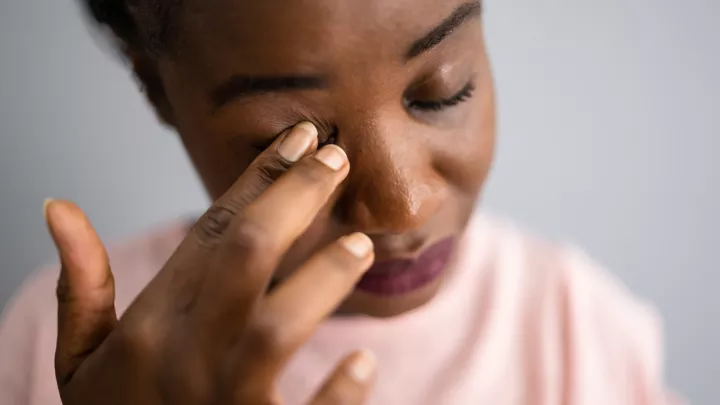Can COVID affect your eyes? 6 'COVID eye' symptoms and when to see a doctor

Since the pandemic's start, we've learned a great deal about the COVID-19 virus and its impact. People respond to the infection in different, and sometimes strange, ways. While some may develop no symptoms, others may experience severe illness.
There's still much to learn, including if there is a connection between the virus and eye symptoms. Knowing whether or not specific symptoms are entirely due to the COVID-19 infection – or something else – can be a challenge.
At the Nebraska Medicine Truhlsen Eye Institute, research is ongoing as we seek to understand the short-term and long-term effects of how the virus may affect our eye health.
Is COVID-19 eye a thing?
The term "COVID eye" has been floating around online when people search for answers about eye symptoms. Although we are still learning how the virus may affect the eyes, we know that some people experience inflammation which can cause mild to severe problems in numerous areas of the body.
"Our research group has found that the virus is found in the eye's tear film," says Steven Yeh, MD, Nebraska Medicine ophthalmologist. "This can sometimes lead to conjunctivitis, an inflammation of the clear membrane on the eye's surface. Most often, eye symptoms are associated with systemic symptoms of COVID, including the typical features of the respiratory illness we're familiar with including cough, fever, and fatigue."
When the eyes are exposed to the virus, a person can develop conjunctivitis symptoms, often appearing like pink eye. Symptoms may include:
- Tearing or watery eyes
- Redness
- Swelling
- Irritation or pain
- Itching
- Discharge
It's important to note that while eye symptoms have been reported in relation to positive COVID-19 cases, it is uncommon for it to be the only symptom. Although pink eye seems to be one of the more common eye symptoms, it occurs in a low percentage of people. Research also indicates it may be more common in people with severe cases of COVID-19.
"While COVID case numbers have improved over time, vigilance and precautions are needed to protect one's health from COVID and other viruses such as influenza," says Dr. Yeh.
When to see a doctor
If you are experiencing eye pain, significant redness or decreased vision, consult an eye doctor. These symptoms could indicate a viral infection or other problem that may need treatment.
"Your ophthalmologist will perform a full eye exam with an assessment of visual acuity, slit lamp microscope and dilated fundus examination," says Dr. Yeh. "If you have tested positive for COVID and have eye symptoms such as swelling or redness, apply cool compresses, wash your hands frequently and avoid touching or rubbing your eye."
Long COVID and eye symptoms
The impact of long COVID-19 and its implications are still unfolding. Research is ongoing, including right here in Omaha. The research team at the Truhlsen Eye Institute is currently conducting studies on the long-term impact of COVID-19 on the eyes. The National Institutes of Health is also funding a National Eye Institute study on long COVID-19, which seeks to understand the symptoms that may develop in many organ systems, including the eye.
If you are experiencing bothersome eye symptoms, eye pain or vision changes, call to make an appointment with an ophthalmologist at 402.559.2020.







